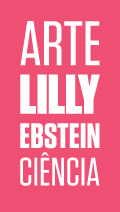Odorico Machado de Souza
AND TOPOGRAPHIC ANATOMY
-
 Lilly Ebstein | Clique para ver +
Lilly Ebstein | Clique para ver + -
 Anatomia | Clique para ver +
Anatomia | Clique para ver + -
 Faculdade de Medicina | Clique para ver +
Faculdade de Medicina | Clique para ver + -
 Odorico Machado de Souza | Clique para ver +
Odorico Machado de Souza | Clique para ver +
The important book “Anatomia Topográfica. Parte Especial. Membro Superior”, by Professor Odorico Machado de Souza, published in 1956, presents 39 drawings by Lilly.
Lilly Ebstein’s illustrations for the book Anatomia Topográfica. Parte Especial. Membro Superior (Topographic Anatomy. Special Part. Upper Limb), by Professor Odorico Machado de Souza, published in 1956, were, most likely, her last major work at the School of Medicine of the University of São Paulo (USP) and perhaps the longest of all the works she created in 30 years. One year before the book was published, Lilly retired as illustrator and photomicrographer from the Illustration and Photomicrography Department at the School, on December 17, 1955, thus ending a career that had begun in 1926.
The book has 39 illustrations that can be attributed to Lilly. There are over 32 illustrations by other illustrators (Lucia de Castro Moreira and Gastão Lorenzini), 4 photographs and 17 reproductions of radiographs.
Odorico Machado de Souza was an anatomist and professor at USP’s School of Medicine and a disciple of Alfonso Bovero. His book was part of a project of a series on Topographic Anatomy. Professor Odorico had already published Anatomia Topográfica – Parte Geral (Topographic Anatomy – General Part) in 1951.
Machado de Souza wrote in the book’s introduction “Topographic Anatomy is of an applied character and constitutes a necessary synthesis for the general physician. It should interest, first and foremost, the surgeon providing him the anatomic synthesis of a regional nature pertinent to a given surgical intervention; but should equally provide the physician many essential bases for interpreting semiotics”.
Moreover, according to Machado de Souza, the interest in studying the upper limb “from the medical point of view, is evident by the fact that 50% of dislocations occur in the scapulohumeral joint and over half of all fractures are to an upper limb, entirely understandable since it is an organ of defense. Around one-third of all wounds affect the hand and fingers”.
Lilly Ebstein Lowenstein (1897-1966) led a life between science and art, drawing and taking photographs in the fields of Medicine and Zoology. In her work, Lilly combined her technical knowledge of photography and drawing, the study of the sciences and a remarkable talent for aesthetics. She was born in Germany and studied at the Lette-Verein School in Berlin from 1911 to 1914. In 1925, she immigrated with her husband and two children to São Paulo. In 1926, she became an illustrator and photomicrographer at the Illustration and Photography Department at the School of Medicine (USP, as of 1934), which she headed for thirty years after 1932. Lilly collaborated at Instituto Biológico de Defesa Agrícola e Animal (the Biological Institute for the Defense of Agriculture and Animals), from 1930 to 1935, namely in the Avian Pathology Department. A life with art dedicated to the research and dissemination of science.

